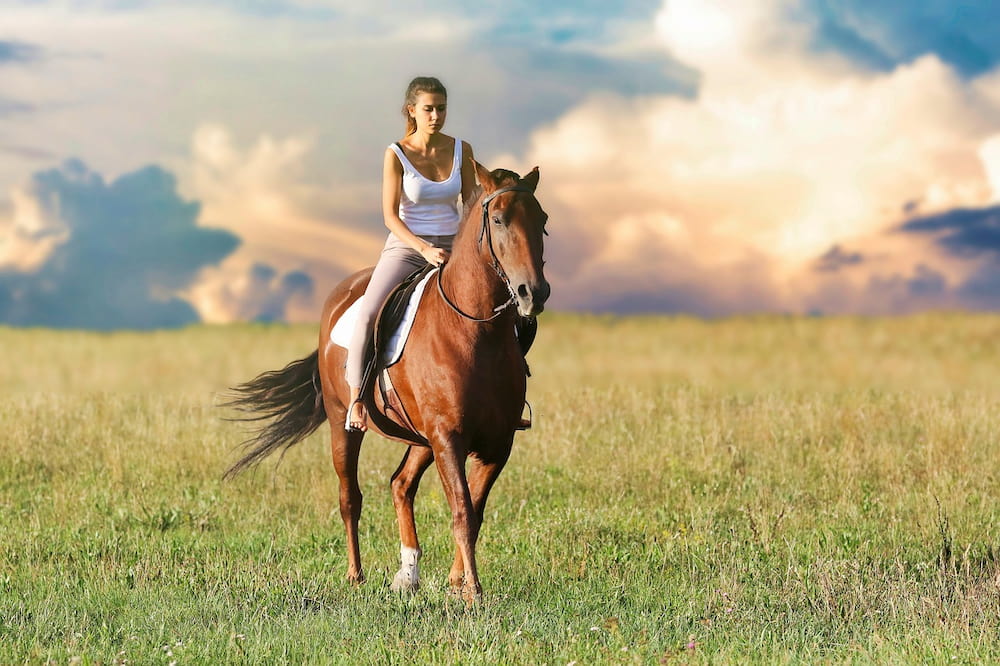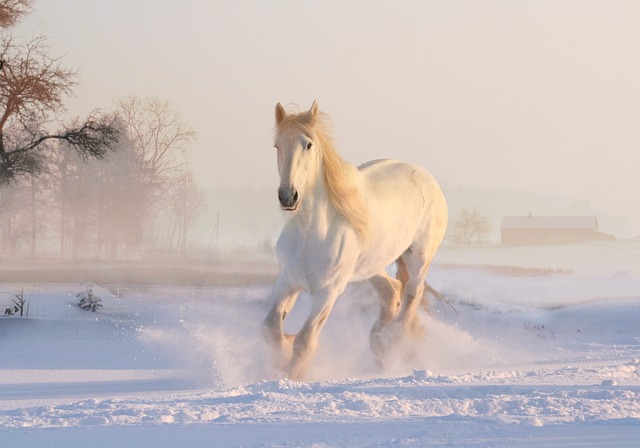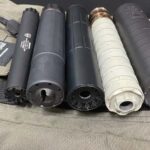
More than 7.2 million Americans own horses, who are mainly used for leisure, competition, racing, and work. Many people believe it can be significantly cost-prohibitive to own a horse, but it can be more affordable than you might think.
How Much Does a Horse Cost? To buy a horse, you can expect to pay between $100 – $10,000, depending on the horse breed’s pedigree, how you are planning to use the horse, and your location. The average cost of a hobby-horse is about $3,000.
For more information, keep reading.
Table of Contents
The Cost Of Ponies
Ponies may not be as big as horses, but that doesn’t mean their costs for purchase or maintenance are any less than those of horses.
Similar to or more expensive than a horse, a good pony can be purchased. Prices for good starter ponies should start at around $1,000 and go higher.
The Real Cost Of A Free Horse
A free horse will probably live up to the old adage, “Keep your distance from a gift horse.” The horse will typically be an elderly animal, a youngster with limited opportunities or training, or a horse with behavioral problems. Yes, it is possible to find a fantastic free horse—say, a mature animal with good judgment and soundness who only needs a nice retirement home. It’s possible that you’re adopting someone else’s problem because these horses are uncommon.
Even though the horse’s initial purchase price was low, you might decide to buy one that has a health or soundness issue. This could end up costing you a lot of money.
Horse Tack Cost
The minimum equipment for your horse will cost you:
- $500 for a low-end saddle
- $20 for saddle pad
- $60 for bridle with reins
- $25 for stirrups
- $30 for halter and lead rope
- $40 for stirrup leathers
- $30 for girth
- $35 for a bit
You’ll have to pay around $750 for all of these things.
Horse Food Cost
Depending on the breed and type of horse, as well as your location, horse feed prices can vary widely.
A 1,000-pound (453.5-kg) horse needs about 20 pounds (9 kg) of hay per day. In general, hay costs $4 to $20 per bale weighing 30 to 50 pounds (13.5–22.5 kg). You should budget between $750 and $3,650 annually.
Keep in mind that during some months, the need for hay can be reduced by grain and lush pasture. The annual cost of a diet that includes hay and grain is roughly $1,500 because bags of grain weighing 50 pounds (22.5 kg) range in price from $12 to $35.
| Daily Costs For A Horse | Daily expenses |
| One-half bale of hay | $3 to $5 |
| Two-cup concentrate servings | $1 or more |
| Supplements | $0.17 |
| Salt blocks | $0.04 |
| Farrier | $0.83 |
| Routine vaccines | $0.27 |
| Dentist | $0.35 |
| Deworming | $0.20 |
Supplements
Numerous equine supplements are available that protect joints, promote hoof health, or enhance digestion. Their daily costs range from $0.40 to $5. Thus, the range of these costs is $30 to $100 per month, or up to $1,200 per year.
Water
As you might expect, a typical horse needs a lot of water. It will require about 6 gallons (22.7 l) of water per day if you keep it in the pasture. On the other hand, a mare nursing a foal will require at least 20 gallons (75.5 l) per day.
Calculating the cost of water is challenging. If you have a well, you will only need to pay $0.06 per month for the needs of one horse. Using city water will cost you $2.17 for every 748 gallons (2,831.5 l) and $4 for the meter. For something as important as water, it is essentially nothing.
Vet Care
Regular check-ups, deworming, and rabies, equine influenza, and tetanus vaccinations are all part of a horse’s annual vet care. Each appointment will cost between $45 and $60, and annual vaccination costs range between $65 and $235.
Regular dental cleanings are also necessary for your pet. Regular tooth filing (also known as “teeth floating”) costs $50 to $175, but the farm call adds another $45 to $60 to the price.
A fecal examination costs $30, and yearly deworming costs between $20 and $50. When you want to move your horse across state lines, you’ll also need to pay for a Coggins test and a health certificate. The cost of the Coggins test ranges from $35 to $90. You should typically budget at least $525 per year for a vet.
However, you should also budget money for unanticipated medical costs such as those associated with infections, lameness, abscesses, colic, and other conditions like those. While a colic surgery can cost anywhere between $5,000 and $10,000, an emergency vet visit is likely to cost you $145.
You can expect to pay $100 to $300 for an equine first aid kit. You might pay $30 per day for some medications. In essence, you cannot plan for these costs.

Farrier
Once every 4 to 6 weeks, your horse will need to see the farrier. For each horse, the cost of trimming ranges from $30 to $80, or roughly $300 to $800 per year.
You’ll spend $75 to $160 on front shoes annually, or at least $750 to $1,600. You must pay $95 to $275, or roughly $950 to $2,750 annually, if you want to regularly replace all four shoes.
Training And Types Of Horses
Similar to young horses with little training or handling, $500 to $1,000 horses are frequently sound, conformational, or have behavioral issues. Of course, there are always exceptions to the rule; there are some hidden treasures among bargains or free horses, but it may require a keen eye and the ability to handle challenges. There are numerous tales of people using these “sows ears” to create “silk purses.”‘ However, novice horse owners might not want to buy them. If you have to pay for trainers, specialized shoeing, and vet bills, a cheap horse might end up costing more in the long run.
Keeping a horse well-trained, sound, healthy, and in good physical condition will increase its value. Although a horse’s bloodlines and conformation are also important, it’s simple to overlook these factors if the animal is a willing worker who is safe to be around and enjoyable to ride. When you spend $1,500 and more on a horse, you are probably getting one that has had the time and money invested in it to make it a nice horse to own. It might have a strong showing history and be simple to clip, bathe, load onto a trailer, stand for the farrier and doctor, and have all the other good manners that make a horse enjoyable and simple to handle.
The higher the asking price, the better the horse’s pedigree and track record. Again, every rule has an exception. With a larger budget, however, you have more options and can reject the horses that are not right for you without feeling bad about it.
Make sure to factor in sales taxes, transportation expenses, and a pre-purchase veterinary exam when estimating how much money you’ll need to purchase a horse. Make sure you have the resources necessary to care for your horse, and think about how you’ll handle any potential veterinary emergencies. The daily care of a horse is actually more expensive than the initial cost, which may appear to be a significant expense.
Horse Insurance Cost
It is wise to have insurance that can be:
- Full or limited mortality
- Major medical
- Surgical
- Loss of use
- Personal liability
At a value of at least $15,000, the estimated cost of insurance ranges from $400 to $1,000 per year.
Tips For Horse Buying
- If you’re thinking of leasing or purchasing a horse, talk to your financial advisor about how to fit it into your budget. It need not be difficult to find a reputable financial advisor. You can interview your advisor matches for free to determine which one is best for you using SmartAsset’s free tool, which matches you with up to three local financial advisors. Get going right away if you’re prepared to find a financial advisor who can assist you in reaching your objectives.
- The price of purchasing and maintaining a horse should be carefully estimated. Once you’ve done that, you’ll need to factor these expenses into your overall financial strategy. You have access to a wide range of tools, including software-based tools, for making a financial plan.
Final Words
Consider what the facilities cover and what you are in charge of as you go over your expenses. You might be able to reduce some of the costs if you’re willing to do more of the work yourself. For instance, you’ll save thousands of dollars in boarding expenses if you have a stable to house your horse.
Leasing a horse is an alternative to buying one. In a partial lease, you would only be required to maintain the horse’s upkeep for a few days each week while still being able to ride it on the other days. If you want to learn to ride but don’t want to incur the additional costs of owning a horse, this may be a better financial option.
I appreciate you reading, a lot.






